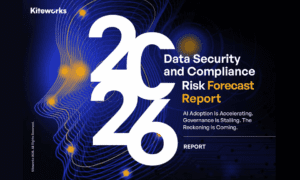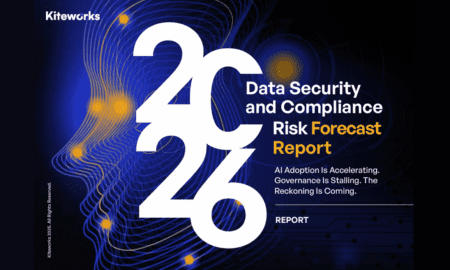When we think about preserving memories, we often picture photo albums or digital scrapbooks. But as more of our lives — and deaths — move online, the act of memory preservation is becoming a matter of rights, governance, and long-term digital infrastructure.
What Is Memory Tech — and Why Now
Startups are no longer just helping families save stories; they are navigating legal grey zones of ownership, inheritance, and cross-border data compliance. Memory Tech is emerging at the intersection of digital legacy, asset management, and regulatory frameworks that traditional tech was never built to handle.
Memory Tech refers to platforms and tools designed to preserve personal and family history in structured, secure, and collaborative ways. Unlike traditional digital storage, which scatters memories across apps and cloud folders, Memory Tech creates a persistent, cohesive archive that survives platform cycles. The rise of global families and the fragmentation of cultural narratives have made this need urgent. What was once a sentimental habit is now a structural problem — and the market is starting to respond.
Families today span continents, languages, and legal systems. But the tools they use to communicate and preserve memories were never designed to handle that complexity. Let’s take, for example, social media story options: they were built for immediate sharing, not longevity. Memory Tech aims to bridge this gap by creating structured, long-term digital archives that endure platform cycles and preserve cultural context.
Legacy Is a System Problem, Not a Feature
Mainstream platforms are optimized for ephemerality: stories disappear in 24 hours, feeds update by the second. Even cloud storage is designed with short-term access in mind.
Memory Tech reverses this model. It treats data as persistent, authorship as layered, and system design as generational. We’re not talking about another folder structure. We’re talking about platforms designed for decade-long lifespans, where a family’s digital archive evolves with them.
The real market gap? There is no infrastructure for collaborative, owned, long-memory systems. What we have now are patches — tools that treat memory as a side feature. Memory Tech is about making it the core.
Where Memory Tech Meets Fintech
As more personal data migrates online, the boundary between memories and assets becomes increasingly blurred. Digital inheritance is no longer just an emotional or cultural concern but a financial one. Profiles with millions of followers, monetized content, NFTs, crypto wallets, and joint digital accounts are becoming integral parts of personal wealth. However, these assets often remain outside of formal financial and legal frameworks.
The challenge with digital legacy now lies in the question, “Who observes it?”. Currently, it is governed by platform-specific policies, not by enforceable legal infrastructure. A will made by a mother or a granny might state who inherits a YouTube channel or a digital wallet. But platforms and services still retain ultimate control over access and deletion. This legal grey zone becomes even more pressing when digital assets generate real income or represent significant value.
Memory Tech platforms like FamTree are in a unique position to bridge this gap. By embedding asset management and inheritance governance into their core systems, they can offer families a structured way to manage both emotional and financial legacy. Especially in underbanked regions, where formal financial services are limited, Memory Tech could evolve into a parallel infrastructure for safeguarding family wealth, identity, and digital continuity in a single ecosystem.
The Legal Grey Zones: Ownership, Consent, and Cross-Border Data
Family archives are co-created. But when disputes arise — over deletion, edits, or privacy — who has the final say? Without predefined governance structures, platforms risk becoming conflict zones.
Those issues are not a UX challenge; it is a legal imperative. Consent flows, authorship tagging, and data inheritance protocols must be built into the platform’s core. And with families often spanning multiple countries, these mechanisms need to comply with differing privacy regulations dynamically.
Apps like FamTree and Family.Space, designed to help families preserve memories, celebrate milestones, and stay meaningfully connected, treat legal clarity as a core necessity, not an optional feature. It is the backbone of user trust. Without transparent models of ownership, edit rights, and inheritance, families will not entrust their digital heritage to a platform.
Investment Outlook: Why VCs Should Care
Memory Tech is not an isolated vertical. It intersects fintech, regtech, insurtech, and collaborative tech. First movers in this space are not just creating apps — they are defining infrastructure for personal data governance in the digital age.
For investors, this means early involvement in a market that will shape how digital legacies and assets are managed for decades. The opportunity lies not in features, but in establishing new legal and technological standards for personal data continuity.
The Future of Memory: From Stories to Systems
The future of Memory Tech lies in building systems that treat digital legacy not as fleeting content, but as structured, encrypted, and portable assets. “Memory as a service” means giving families confidence that their histories are preserved, transferable, and protected — not just for today, but for decades ahead.
Early regulation will be pivotal in this space. The companies that proactively shape legal standards for digital inheritance and data ownership will not only ensure compliance but will influence how personal data rights are defined in a digital-first world.
Those who build thoughtful, legally sound infrastructure for memory preservation will define the rules of digital heritage management. It’s not just about features or user metrics. The focus should be on creating the backbone for how families secure their identity, stories, and assets in a fragmented, fast-changing digital environment. And such a trend is not just a fling; it is a foundational shift in how we structure digital heritage for the future.



































